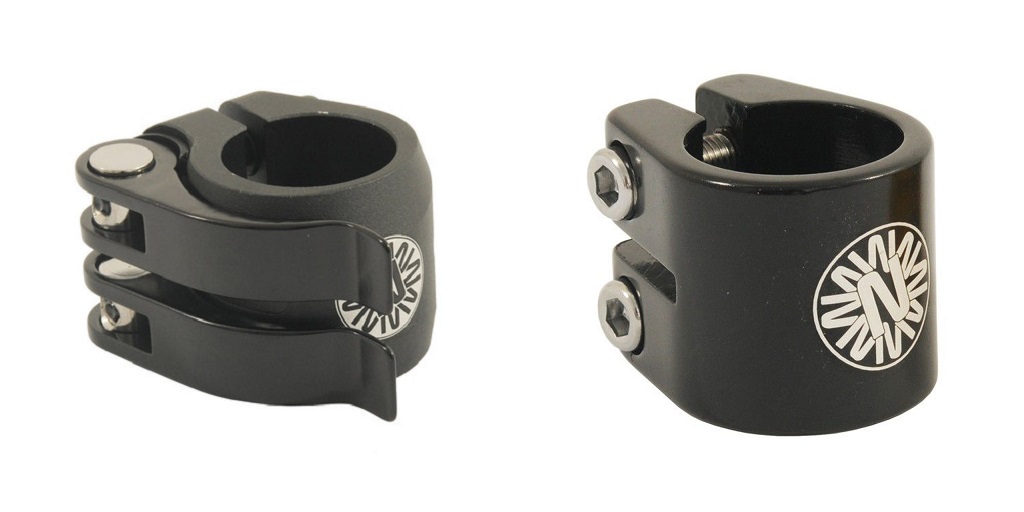
The seatpost clamp is one of those parts of your unicycle that’s forgotten till you need to do something with it, like adjust your unicycle’s saddle height. Much like the spokes (about which you won’t think much unless the wheel starts to run out of true) the seatpost clamp is a part non-gratis.
Nonetheless, this short post will explore some of the information associated with it that you will want to know.
Adjusting Seatpost Height
The seatpost clamp is the primary part you will engage to raise or lower your unicycle’s saddle height. Some seatpost clamps require tools to adjust them and others do not.
Keep in mind also that the seat tube itself can be cut down with either a hacksaw or a pipe cutter if it is too long and you can’t lower it satisfactorily.
About Bolted Seatpost Clamps
There are two main types of unicycle seatpost clamps. One of them is called a bolted seatpost clamp. Bolted clamps may have either one or two bolts.
One of the main drawbacks associated with this type of seatpost clamp is that you need a tool to loosen or tighten the clamp in the field, which means that if you don’t have the tool you can’t adjust saddle height on the fly.
However, this is rarely if ever a problem since the tool needed is a corresponding hex wrench, and these are included in basically all practical unicycle tools. Just throw one in your pack and you’ll be set.
While slightly less convenient than quick-release clamps, bolted clamps offer a surer fit and can be tightened to ensure that the seat tube does not move or slip.
About Quick-Release Seatpost Clamps
There are also quick-release seatpost clamps that have either one or two levers that lock closed to tighten the clamp, or which open to release the pressure so that the seat tube can be moved up or down, raising or lowering the saddle.
Some riders prefer these, if only because no tools are needed to make adjustments to saddle height. Because of this, adjustments to saddle height can be made in the field without the need to carry tools.
Replacing the Seatpost Clamp in Your Unicycle
The most important thing you will want to remember before replacing your unicycle’s seatpost clamp is that you get an appropriately sized option.
There are numerous common sizes in unicycle seatpost clamps, including (but not limited to) 28.6, 34.9, and 31.8 seatpost clamps (all sizes in mm).
It is critical to ensure that you get an appropriately sized seatpost clamp to ensure compatibility before you intend to complete the replacement.
Where to Find Unicycle Parts Compatible with Your Ride
If you’re here for unicycle parts – whether a tire lever, a new saddle, or a 31.8 seatpost clamp, the place to get it is online at Unicycle.com. No one has more parts for unicycles – or experience – than they do.
If you have any questions before buying any unicycle tools or parts, get in touch with them.


